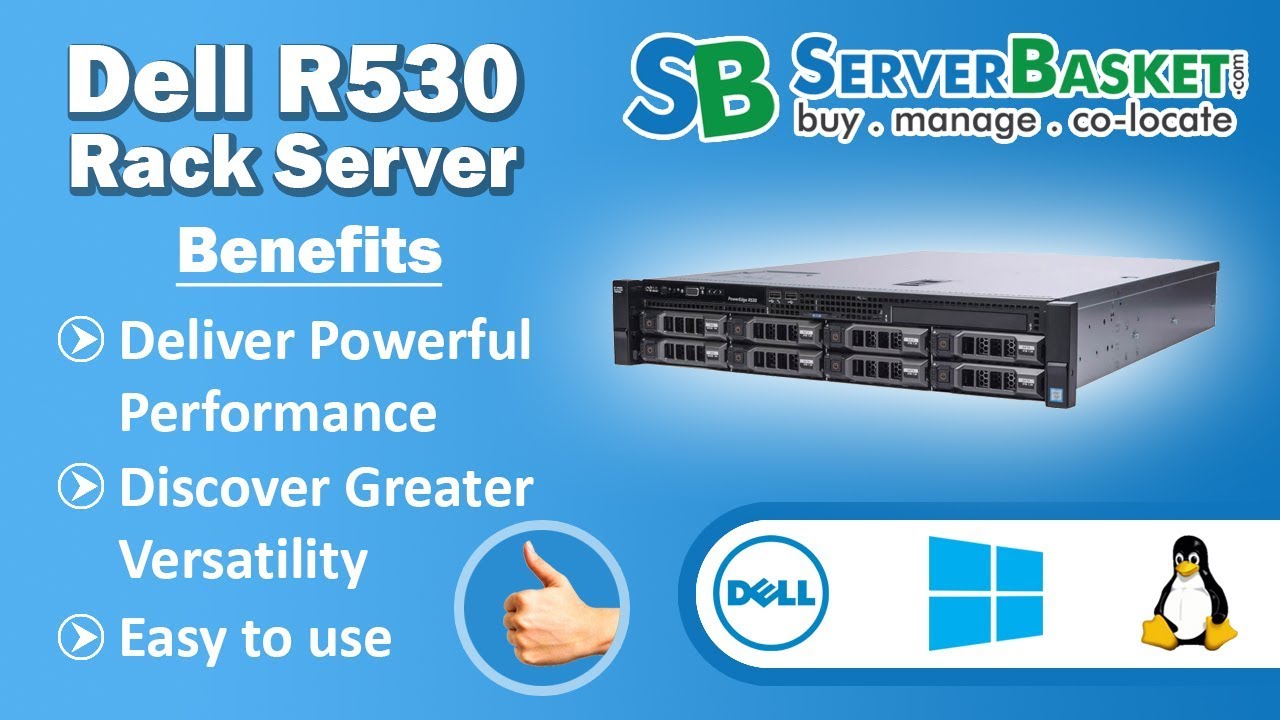Technology
Airtable just launched an AI platform that could change how you work

Join our daily and weekly newsletters for the latest updates and exclusive content on industry-leading AI coverage. Learn More
As companies struggle to realize returns on massive investments in artificial intelligence, Airtable is betting it can help enterprises finally deploy AI into critical business workflows at scale.
The San Francisco-based company announced on Thursday new capabilities that transform its collaborative app-building platform into what it calls a “true enterprise-grade AI platform.”
The additions include App Library, which allows companies to create standardized AI-powered applications that can be customized across an organization, and HyperDB, which enables integration of massive datasets of over 100 million records.

AI deployment: Moving beyond chatbots to workflow automation
“There’s been way too much emphasis on just the hard tech, and not nearly enough emphasis on the ergonomics and how to actually utilize LLMs today,” said Howie Liu, Airtable’s co-founder and CEO, in an interview with VentureBeat. He argued that while there’s been fascination with ever-larger AI models, the focus needs to shift to deploying AI in real business use cases.
The move positions Airtable to capitalize on surging enterprise interest in generative AI. Goldman Sachs forecasts $1 trillion in AI investments from tech firms, corporations and utilities in coming years. But many early AI initiatives have failed to deliver tangible business impact.
“We’re at a tipping point in the AI era, yet most enterprise AI adoption is still just scratching the surface of the powerful potential that could transform digital operations,” the company said in its announcement.

Balancing standardization and customization: The Enterprise AI challenge
Airtable claims its platform is already used by major media, retail and financial services companies to power critical operations. One unnamed “leading streaming company” reportedly saved 280 hours per week on content genre classification using custom AI solutions built on Airtable.
The new enterprise offerings aim to strike a balance between standardization and customization — a common challenge for global organizations. App Library allows central teams to create standardized applications with embedded AI that can then be adapted by different business units.
“We give them a Lego kit, and we make the technology really accessible,” Liu said, emphasizing Airtable’s focus on empowering business users rather than just technical teams.
HyperDB, meanwhile, is designed to make massive datasets from systems like Snowflake and Salesforce more accessible for use in departmental applications while maintaining centralized governance.

Scaling AI: From chat interfaces to parallel processing of thousands of tasks
Airtable faces competition from established enterprise software vendors racing to embed AI capabilities, as well as a crop of AI-native startups. But Liu believes Airtable’s approach of enabling parallel deployment of AI across thousands of records or workflow steps is differentiated.
“It would be like, could you hire overnight and just for five minutes worth of work, 10,000 decently smart interns to go work on a task,” he said. “That is a really powerful kind of form factor.”
The moves come as Airtable, valued at $11 billion in late 2021, navigates a more challenging funding environment for tech startups. The company laid off about 250 employees last year and is reportedly preparing for a potential IPO.
Airtable’s enterprise push represents a significant pivot from its roots as a user-friendly collaborative spreadsheet tool. While the company has successfully built a large user base with its grassroots adoption strategy, competing in the enterprise market presents new challenges. Airtable will need to prove it can handle the complex security, compliance, and integration requirements of large organizations.
This strategic shift positions Airtable in direct competition with tech giants like Microsoft, Salesforce, and ServiceNow, all of which are rapidly integrating AI into their offerings. Airtable’s success will likely depend on whether its approach—empowering business users to create AI-enhanced applications—can deliver tangible productivity gains more efficiently and cost-effectively than solutions from established vendors.
As enterprises grapple with how to extract value from their AI investments, Airtable’s platform could find a receptive audience. However, the company will need to clearly articulate its differentiation and ROI proposition to stand out in an increasingly crowded market for enterprise AI solutions.
In the end, Airtable’s ambitious leap from organizing data to orchestrating AI may just prove that in the world of enterprise software, the best way to think outside the box is to rebuild it entirely.
Source link
Technology
Gemini for Gmail just got so much smarter!

Google is on the path to an AI-powered ecosystem of products. The company has been adding AI tools to its most used services, and the tools just keep on coming. According to a new report, Smart Reply on Gmail just got a boost thanks to Gemini.
Times truly have changed! Back in 2017, the height of AI was Google Assistant reading you a bedtime story. That was the year that Google introduced Smart Reply, a feature that would suggest replies to give people that you’re having a conversation with. The replies were pretty simple, and not much has changed since then. When you’re in an email conversation, you’ll see the smart replies, but they’ll still be pretty simple and broad in nature.
Smart Reply in Gmail will get the Gemini treatment
A feature like Smart Reply was not safe from Gemini, as it’s a feature that could very well be enhanced. Right now, you can only use it with the Gmail mobile app. As you can imagine, the enhanced Smart Reply will use context awareness. Basically, it will read the email conversation to gain context for what it’s about. Then, it will give you a selection of three different responses that you can send. Those will appear in a carousel at the bottom of the screen.
The suggestions will consist of two parts. The first part will be a line of blue text explaining the direction the response will go in. In the screenshots below, we see that one of them says “Confirm Sunday Launch, ask goals” and another one says “Confirm Sunday Launch, excited”.
So, for the first one, we’re sure that the response will confirm the launch and ask what the sender hopes to achieve with it. The second one confirms the launch and shows how excited the person is about it.
The second part shows you a preview of the text that will go into the text field. When you tap on the suggestion, it will go directly into the field so that you can review and edit it. You’ll want to look it over because generative AI is still relatively new, so there’s the chance that it could mess up on some details.
Who can use this feature?
Right now, you can only use this feature if you’re subscribed to Google One AI Premium or if you’re on the Gemini Business, Enterprise, Education, or Education Premium plan. So, if you’re a free user, you’re going to have to stick to the old-fashioned way of writing emails… which is writing them.
Servers computers
Dell PowerEdge R530 Rack Server – Complete Details, Specifications & Benefits

For Complete Information on Dell PowerEdge R530 Rack Server, Please Contact Us at:
Website: https://www.serverbasket.com
Email: sales@serverbasket.com
Toll-Free No: 1800 123 1346
WhatsApp: +91 8886001858
Subscribe To Our Channel @ https://www.youtube.com/channel/UCO8bZFM0NzVsjG7Ss83LvOQ
Check out the Versatile & Powerful Dell PowerEdge R530 Rack Server.
Check the Product Link:
Latest: https://www.serverbasket.com/shop/buy-dell-power-edge-r530-rack-server/
Refurbished: https://www.serverbasket.com/shop/refurbished-dell-poweredge-r530-server/
Rental: https://www.serverbasket.com/shop/dell-r530-server-on-rental/
Buy Dell PowerEdge R530 Server from Server Basket as it is Highly Flexible & Produces Maximum Output for Your Businesses. With High Memory Capacity & Huge Storage Ability, Dell R530 Server is The Best Server Choice for Tech Startups & Booming SME Businesses on Budget.
Key Benefits:
– Flexible Technology
– Energy-Optimized
– Best Suited for Booming Businesses & Multiple Users
– Innovative Management with Intelligent Automation
– Intelligent Platforms, Connected Foundation
– Easy To Use
– Huge Storage Available
– End-To-End Remote Management
– Quick Virtualization
– Best Price in Market
– Instant Delivery
– Quick Support
Dell PowerEdge R530 Server Specifications:
CPU Capacity:
– Supports 2 Processors
– Intel® Xeon® processor E5-2600 v4 product family
– Single CPU = 18 Cores Max
– Dual CPU = 36 Cores Max
– Max VCPUs: 60-64 VCPUs
RAM Capacity:
– Inbuilt 12 DIMM Slots
– 32GB Max Memory Per DIMM Slot
– 384GB Maximum Memory Capacity
– Supported Technology: DDR4 Memory
– RAM Speed: 2400MT/s
Storage Capacity:
– Upto 8 x 3.5″ SAS, SATA, nearline SAS, SSD drives
– Max Potential: 96TB Storage
Raid Controller:
Internal:
-PERC S130 (SW RAID)
-PERC H330
-PERC H730
-PERC H730P
External:
– PERC H810
– 12Gbps SAS HBA
Power Supply:
-495W, 750W, 1100W hot-plug PSU
-48V DC 1100W hot-plug PSU
-450W cabled PSU.
Compatible Operating System with Refurbished Dell R530 Server:
-Microsoft Windows Server® 2008 R2
-Microsoft Windows Server 2012
-Microsoft Windows Server 2012 R2
-Novell® SUSE® Linux Enterprise Server
-Red Hat Enterprise Linux
Ready For Virtualization:
-Citrix® XenServer®
-VMware vSphere® ESX™ and ESXi™
-Red Hat Enterprise Virtualization®
Additional Features:
Support for up to 5 x PCIe• 3 x PCIe 3.0• 2 x PCIe 2.0
Check out the Powerful Dell PowerEdge R530 Server from Server Basket.
#DellR530Server #BuyDellServer #BuyServerinIndia #BuyDellR530Refurb #Dell_R530_Server #ServerBasket .
source
Technology
Spotify is up and running again after a brief outage

Spotify should be working normally again now after a few hours of service issues. The Spotify Status account posted on X Sunday afternoon to say, “Everything’s looking much better now!” Earlier in the day, it confirmed that it had been experiencing problems following users’ reports that the app and web player were acting up. Spotify users on social media reported a variety of issues, from songs repeatedly pausing on them to being locked out of the streaming platform entirely.
The problems spiked a little before 11AM ET, per Downdetector, and persisted for two hours or so. At 12:14PM ET, Spotify Status posted, “We’re aware of some issues right now and are checking them out!” In the meantime, the comments section of Downdetector turned into a full-blown unhinged group chat. I was still having issues with the web player around 1:15PM, but it all appears to have been resolved now.
Update, September 29 2024, 2:45PM ET: Spotify is back online. This story has been update to include a note from Spotify Status on the issue’s resolution.
Servers computers
Bolein 42U 600mm * 600mm Network Server Rack Cabinet

Bolein 42U 600mm*600mm free-standing DDF network rack enclosure server cabinet can be used in data centers, monitoring rooms, CCTV, and other places.
The front toughened glass door with a spring lock, side panels are removable, steel rear door with a round lock.
Assembled frame structure.
Cable entry and ventilation hole on top cover and bottom panel.
The main material is SPCC cold-rolled steel. Mounting profile thickness is 2.0mm, mounting angle thickness is 1.5mm, others thickness is 1.2mm.
The degree of protection is IP20 and it can be customized.
Standard static loading capacity is 800 KG, and it can be increased to 1000 KG by adding auxiliary mounting angle if need.
Adjustable feet and heavy-duty casters. Cable manager, cooling fan, fixed shelf, sliding tray, patch panel, and other rack accessories are available.
If you are interested in it, you can contact us. We are also able to provide you the OEM racks. Whatsapp: +8613467017439; Mobile/Wechat : +8617854120882; Skype: live:brenda123456fanhua; Email: sales3_cd@bolein.net; Site: www.bolein.net; bolein.en.alibaba.com
source
Technology
Redbird supercharges analytics pipeline with AI agents, handles 90% of workload

Join our daily and weekly newsletters for the latest updates and exclusive content on industry-leading AI coverage. Learn More
Just as enterprises continue to adopt large language model-powered text-to-SQL as a way to ‘talk’ to their data assets, a new shift in the ecosystem has started emerging: AI agents. Today, New York-based Redbird announced a new chat platform that uses “specialist agents” to help enterprises handle most analytics value chain tasks, from data collection and engineering to data science and producing actual insights (reporting).
This means an enterprise user can give a natural language prompt to get insights from data in almost real-time and execute analytical efforts that pave the way for those insights. According to Erin Tavgac, the co-founder and CEO of the company, this represents more than 90% of an enterprise’s business intelligence efforts.
“For the past several decades the promise of truly self-serve analytics has fallen short for organizations, with the reality instead being complex data pipelines, dashboards, and shadow analytics that require technical skills. We have invested significant R&D into fusing the power of LLMs with Redbird’s robust end-to-end analytical toolkit in the form of AI agents that enable users to finally achieve self-serve, conversational BI that runs on their organization’s data,” he said in a statement.
Moving into the age of AI agents
While the age of AI agents is new, Redbird itself has been a long-standing player in the analytics domain. The company started in 2018 as Cube Analytics and provided enterprises with a no-code, drag-and-drop toolkit that enabled their users to create workflows aimed at automating and unifying all analytical tasks leading to dashboarding and insights. Earlier this year, the company expanded this work with the launch of a conversational interface, allowing users to ask business questions in natural language and receive insights and reporting outputs in real-time.
Now, as the next step, Redbird has added an ecosystem of specialized agents that operate on top of this end-to-end toolkit to orchestrate as well as execute multi-step analytical tasks to answer business-related questions.
As Tavgac explained, admins setting up the chat platform have to choose a base LLM (like GPT, Llama etc) and load up their organization’s proprietary data ontologies, business logic and reporting blueprints (like business definitions, PowerPoint report templates, etc.) to customize it with relevant business context. Once the data is inputted, the AI agents using the LLM begin to use all the context and generate metadata from the information to do their work — in response to user questions.
“User prompts are sent to Redbird routing agents, which identify the best specialist agents to execute the tasks for that prompt (like PowerPoint Reporting agent, Data Engineering agent, etc.) and figure out how to orchestrate the execution order of those agents. Each specialist agent then manages its own part of the overall task by identifying relevant datasets/ontologies and executing the needed task using the Redbird toolkit, which includes applications and functions to handle the mechanical steps of the pipeline,” Tavgac noted.
Detailing the tasks, he noted Redbird agents can pull unstructured or structured data from over 100 data sources, including Snowflake, Databricks and Hubspot. It can run advanced processing on top of the collected data by performing data wrangling, AI-driven tagging and data science modeling. It can also generate robust reporting outputs (like presentations, Excel reports and email/Slack updates) while taking necessary actions based on those reports (like executing an ad buy/modifying a campaign).
“Once the task is executed, the chat platform responds to the user with not just a text answer but also any deliverables needed, like a PowerPoint report the agents built or the data that they collected from a SaaS system,” he said.

No-code workflow orchestration remains available
As enterprises double down on their data efforts, going beyond text-to-SQL — adopted by Dremio, Snowflake and many others – and streamlining the analytics pipeline end-to-end with AI agents could be a great way to save time and resources.
However, as many may still have concerns over the reliability of AI agents, Redbird is not doing away with its original drag-and-drop interface for automating business intelligence workflows. Instead, the company has made no-code the secondary option for users. The agents will orchestrate the tasks while also creating a no-code version of the workflow, allowing users to audit and inspect everything in detail if required.
“So far, existing AI solutions have primarily tackled the automation of a very small fraction of BI and analytics efforts (SQL querying). While Redbird values and solves for that use case (text-to-SQL), it is also applying the power of its AI agents to automate the other more difficult and more sizable parts of enterprise BI workflows… Our approach to solving this challenge has enabled us to onboard eight of the Fortune 50 brands and over 30 mid-to-large-sized enterprise customers in the last few months,” Tavgac added. This includes brands like Mondelez International, USA Today, Bobcat Company and Johnson & Johnson.
Currently, he said the company is offering its technology on a SaaS model with usage-based licensing fees and generating seven-figure revenue. However, he did not share the exact specifics.
As the next step, Redbird will continue its AI agent-driven work and take its new Chat platform to more enterprises. It also plans to add more advanced agents in the analytics value chain to enable even deeper AI-powered business intelligence coverage for non-technical users.
“We also aim to expand beyond our primary focus on analytics / BI use cases and into a deeper ‘Large Action Model’ approach that leverages AI agents that can take more nuanced action based on the analytical results (i.e. purchase supplies, send invoices).
Source link
Technology
New York tech investor and serial entrepreneur Kevin Ryan explains when to sell your company

Kevin Ryan has had a long and storied career as a pivotal force of New York City tech. He’s the founder and CEO of investment firm AlleyCorp, which has invested in a wide variety of startups, and is a serial founder, participating in the early stages of companies such as Business Insider, Zola, Gilt, Pearl Health, and Transcend Therapeutics. He helped build ad tech company DoubleClick as president and CEO in the 1990s and early 2000s, and Google later bought it for $3.1 billion in 2007, transforming the online advertising industry. He went on to co-found unstructured database provider 10gen, which later changed its name to MongoDB and went public in 2017.
Last Tuesday, I interviewed Ryan to discuss pivotal moments in company transformation for the benefit of the companies chosen for this year’s Startup Battlefield 200 at TechCrunch Disrupt.
As a part of the Startup Battlefield 200 program, the selected founders participate in pitch training workshops as well as a series of exclusive master classes with top-tier VCs, successful founders and operational experts. The virtual program aims to prepare and excite them for what is to come when they exhibit, demo and pitch at Disrupt in October.
During Ryan’s session, he offered a lot of useful advice for companies at all stages, from finding a great cofounder, to when and how to seek funding, to how a founder’s focus should change as a company scales.
But given his background with DoubleClick and MongoDB, I asked him how company founders should decide when and whether to take an acquisition offer, versus when they should hold on and try to go public.
“There’s no formula but what I’m thinking about is, one, what do our prospects look like?” he said. “Let’s not be delusional — how much are we growing, what is this company going to look like in three years, what are the exit strategies, then how many other people — other buyers — are there, how are we doing relative to everyone else?”
He added, “Most people underestimate the time factor, so if we’re worth $100 today, four years from now it’s got to be worth $200 just to break even because of risk, cost of capital, things like that. So are you signing up as CEO [because you believe] that we’re going to be worth $300? If you really believe that then we should hold on. But if you just think it’s going to be $150 or $170 we should probably sell today because also you need to factor in: Markets can close at any time. You and I over 25 years could name many things we didn’t see coming. The Ukraine war. No one saw inflation coming. No one saw many things coming….and all of a sudden everything’s dead.”
By and large, he said, more people should sell earlier, rather than holding out to try and become the next Mark Zuckerberg, who famously turned down a chance to sell Facebook to Yahoo for $1 billion in 2006. (Disclosure: Yahoo owns TechCrunch.)
“I think more people should sell than probably sell on average,” Ryan told me. “You’re definitely going to read the story of the $20 billion company that turned something down, but there are a lot of other examples of people that could have [sold].”
He added that lot of founders don’t think clearly when it comes to personal wealth from an acquisition, chasing ever-bigger numbers instead of settling for a life-changing amount of money. And by not settling, they often end up with zero instead.
“I had this conversation the other day,” he said. “Someone could sell now and they’re going to make $30 million. $30 million is an incredible amount of money. It’s life changing, right? And they can… a year later go off and do so many things. And you know what? $60 million doesn’t make you much happier than 30, right, but 30 it makes a big difference from zero.”
He added, “It sounds great to make 60, 90, 100. It actually doesn’t change your life very much.”
-

 Womens Workouts6 days ago
Womens Workouts6 days ago3 Day Full Body Women’s Dumbbell Only Workout
-

 Technology2 weeks ago
Technology2 weeks agoWould-be reality TV contestants ‘not looking real’
-

 Science & Environment1 week ago
Science & Environment1 week ago‘Running of the bulls’ festival crowds move like charged particles
-

 News1 week ago
News1 week agoOur millionaire neighbour blocks us from using public footpath & screams at us in street.. it’s like living in a WARZONE – WordupNews
-

 Science & Environment1 week ago
Science & Environment1 week agoHyperelastic gel is one of the stretchiest materials known to science
-

 Science & Environment2 weeks ago
Science & Environment2 weeks agoMaxwell’s demon charges quantum batteries inside of a quantum computer
-

 Science & Environment2 weeks ago
Science & Environment2 weeks agoSunlight-trapping device can generate temperatures over 1000°C
-

 Science & Environment2 weeks ago
Science & Environment2 weeks agoHow to unsnarl a tangle of threads, according to physics
-

 Science & Environment2 weeks ago
Science & Environment2 weeks agoHow to wrap your mind around the real multiverse
-

 Science & Environment2 weeks ago
Science & Environment2 weeks agoPhysicists are grappling with their own reproducibility crisis
-

 Science & Environment2 weeks ago
Science & Environment2 weeks agoITER: Is the world’s biggest fusion experiment dead after new delay to 2035?
-

 Science & Environment2 weeks ago
Science & Environment2 weeks agoLiquid crystals could improve quantum communication devices
-

 News2 weeks ago
News2 weeks agoYou’re a Hypocrite, And So Am I
-

 Science & Environment1 week ago
Science & Environment1 week agoQuantum ‘supersolid’ matter stirred using magnets
-

 Science & Environment2 weeks ago
Science & Environment2 weeks agoWhy this is a golden age for life to thrive across the universe
-

 Sport1 week ago
Sport1 week agoJoshua vs Dubois: Chris Eubank Jr says ‘AJ’ could beat Tyson Fury and any other heavyweight in the world
-

 Science & Environment1 week ago
Science & Environment1 week agoQuantum forces used to automatically assemble tiny device
-

 Science & Environment1 week ago
Science & Environment1 week agoNuclear fusion experiment overcomes two key operating hurdles
-

 Science & Environment2 weeks ago
Science & Environment2 weeks agoNerve fibres in the brain could generate quantum entanglement
-

 Science & Environment2 weeks ago
Science & Environment2 weeks agoTime travel sci-fi novel is a rip-roaringly good thought experiment
-

 Science & Environment2 weeks ago
Science & Environment2 weeks agoLaser helps turn an electron into a coil of mass and charge
-

 Science & Environment2 weeks ago
Science & Environment2 weeks agoCaroline Ellison aims to duck prison sentence for role in FTX collapse
-

 CryptoCurrency1 week ago
CryptoCurrency1 week agoCardano founder to meet Argentina president Javier Milei
-

 Science & Environment1 week ago
Science & Environment1 week agoMeet the world's first female male model | 7.30
-

 News1 week ago
News1 week agoIsrael strikes Lebanese targets as Hizbollah chief warns of ‘red lines’ crossed
-

 Womens Workouts1 week ago
Womens Workouts1 week agoBest Exercises if You Want to Build a Great Physique
-

 CryptoCurrency1 week ago
CryptoCurrency1 week agoEthereum is a 'contrarian bet' into 2025, says Bitwise exec
-

 Science & Environment2 weeks ago
Science & Environment2 weeks agoQuantum time travel: The experiment to ‘send a particle into the past’
-

 CryptoCurrency1 week ago
CryptoCurrency1 week agoDZ Bank partners with Boerse Stuttgart for crypto trading
-

 Womens Workouts1 week ago
Womens Workouts1 week agoEverything a Beginner Needs to Know About Squatting
-

 Travel5 days ago
Travel5 days agoDelta signs codeshare agreement with SAS
-

 Science & Environment1 week ago
Science & Environment1 week agoA new kind of experiment at the Large Hadron Collider could unravel quantum reality
-

 News1 week ago
News1 week agoBrian Tyree Henry on voicing young Megatron, his love for villain roles
-

 News2 weeks ago
News2 weeks ago▶️ Media Bias: How They Spin Attack on Hezbollah and Ignore the Reality
-

 Science & Environment2 weeks ago
Science & Environment2 weeks agoA slight curve helps rocks make the biggest splash
-

 Science & Environment1 week ago
Science & Environment1 week agoTiny magnet could help measure gravity on the quantum scale
-

 Science & Environment1 week ago
Science & Environment1 week agoWhy we need to invoke philosophy to judge bizarre concepts in science
-

 Science & Environment1 week ago
Science & Environment1 week agoHow do you recycle a nuclear fusion reactor? We’re about to find out
-

 CryptoCurrency1 week ago
CryptoCurrency1 week agoBitcoin miners steamrolled after electricity thefts, exchange ‘closure’ scam: Asia Express
-

 CryptoCurrency1 week ago
CryptoCurrency1 week agoDorsey’s ‘marketplace of algorithms’ could fix social media… so why hasn’t it?
-

 CryptoCurrency1 week ago
CryptoCurrency1 week agoRedStone integrates first oracle price feeds on TON blockchain
-

 CryptoCurrency1 week ago
CryptoCurrency1 week agoBitcoin bulls target $64K BTC price hurdle as US stocks eye new record
-

 CryptoCurrency1 week ago
CryptoCurrency1 week agoBlockdaemon mulls 2026 IPO: Report
-

 CryptoCurrency1 week ago
CryptoCurrency1 week agoCoinbase’s cbBTC surges to third-largest wrapped BTC token in just one week
-

 News1 week ago
News1 week agoFour dead & 18 injured in horror mass shooting with victims ‘caught in crossfire’ as cops hunt multiple gunmen
-

 Womens Workouts6 days ago
Womens Workouts6 days ago3 Day Full Body Toning Workout for Women
-

 Politics4 days ago
Politics4 days agoHope, finally? Keir Starmer’s first conference in power – podcast | News
-

 Sport1 week ago
Sport1 week agoUFC Edmonton fight card revealed, including Brandon Moreno vs. Amir Albazi headliner
-

 Technology1 week ago
Technology1 week agoiPhone 15 Pro Max Camera Review: Depth and Reach
-

 Science & Environment1 week ago
Science & Environment1 week agoHow one theory ties together everything we know about the universe
-

 Science & Environment2 weeks ago
Science & Environment2 weeks agoBeing in two places at once could make a quantum battery charge faster
-

 CryptoCurrency1 week ago
CryptoCurrency1 week agoCrypto scammers orchestrate massive hack on X but barely made $8K
-

 Science & Environment1 week ago
Science & Environment1 week agoUK spurns European invitation to join ITER nuclear fusion project
-

 CryptoCurrency1 week ago
CryptoCurrency1 week agoLow users, sex predators kill Korean metaverses, 3AC sues Terra: Asia Express
-

 CryptoCurrency1 week ago
CryptoCurrency1 week agoSEC asks court for four months to produce documents for Coinbase
-

 CryptoCurrency1 week ago
CryptoCurrency1 week ago‘No matter how bad it gets, there’s a lot going on with NFTs’: 24 Hours of Art, NFT Creator
-
Business1 week ago
How Labour donor’s largesse tarnished government’s squeaky clean image
-

 News1 week ago
News1 week agoBrian Tyree Henry on voicing young Megatron, his love for villain roles
-

 Womens Workouts1 week ago
Womens Workouts1 week agoHow Heat Affects Your Body During Exercise
-

 Womens Workouts1 week ago
Womens Workouts1 week agoKeep Your Goals on Track This Season
-

 News1 week ago
News1 week agoChurch same-sex split affecting bishop appointments
-

 Technology1 week ago
Technology1 week agoFivetran targets data security by adding Hybrid Deployment
-

 Science & Environment1 week ago
Science & Environment1 week agoSingle atoms captured morphing into quantum waves in startling image
-

 Science & Environment1 week ago
Science & Environment1 week agoHow Peter Higgs revealed the forces that hold the universe together
-

 CryptoCurrency1 week ago
CryptoCurrency1 week ago$12.1M fraud suspect with ‘new face’ arrested, crypto scam boiler rooms busted: Asia Express
-

 Science & Environment1 week ago
Science & Environment1 week agoFuture of fusion: How the UK’s JET reactor paved the way for ITER
-

 CryptoCurrency1 week ago
CryptoCurrency1 week agoDecentraland X account hacked, phishing scam targets MANA airdrop
-

 CryptoCurrency1 week ago
CryptoCurrency1 week agoCertiK Ventures discloses $45M investment plan to boost Web3
-

 CryptoCurrency1 week ago
CryptoCurrency1 week agoBeat crypto airdrop bots, Illuvium’s new features coming, PGA Tour Rise: Web3 Gamer
-

 CryptoCurrency1 week ago
CryptoCurrency1 week agoTelegram bot Banana Gun’s users drained of over $1.9M
-

 CryptoCurrency1 week ago
CryptoCurrency1 week ago‘Silly’ to shade Ethereum, the ‘Microsoft of blockchains’ — Bitwise exec
-

 CryptoCurrency1 week ago
CryptoCurrency1 week agoEthereum falls to new 42-month low vs. Bitcoin — Bottom or more pain ahead?
-
Business1 week ago
Thames Water seeks extension on debt terms to avoid renationalisation
-
Politics1 week ago
‘Appalling’ rows over Sue Gray must stop, senior ministers say | Sue Gray
-

 News1 week ago
News1 week agoWhy Is Everyone Excited About These Smart Insoles?
-

 Politics2 weeks ago
Politics2 weeks agoTrump says he will meet with Indian Prime Minister Narendra Modi next week
-

 Technology2 weeks ago
Technology2 weeks agoCan technology fix the ‘broken’ concert ticketing system?
-

 Health & fitness2 weeks ago
Health & fitness2 weeks agoThe secret to a six pack – and how to keep your washboard abs in 2022
-

 CryptoCurrency1 week ago
CryptoCurrency1 week ago2 auditors miss $27M Penpie flaw, Pythia’s ‘claim rewards’ bug: Crypto-Sec
-

 CryptoCurrency1 week ago
CryptoCurrency1 week agoJourneys: Robby Yung on Animoca’s Web3 investments, TON and the Mocaverse
-

 CryptoCurrency1 week ago
CryptoCurrency1 week agoLouisiana takes first crypto payment over Bitcoin Lightning
-

 CryptoCurrency1 week ago
CryptoCurrency1 week ago‘Everything feels like it’s going to shit’: Peter McCormack reveals new podcast
-

 Science & Environment1 week ago
Science & Environment1 week agoA tale of two mysteries: ghostly neutrinos and the proton decay puzzle
-

 CryptoCurrency1 week ago
CryptoCurrency1 week agoSEC sues ‘fake’ crypto exchanges in first action on pig butchering scams
-

 CryptoCurrency1 week ago
CryptoCurrency1 week agoBitcoin price hits $62.6K as Fed 'crisis' move sparks US stocks warning
-

 CryptoCurrency1 week ago
CryptoCurrency1 week agoVonMises bought 60 CryptoPunks in a month before the price spiked: NFT Collector
-

 CryptoCurrency1 week ago
CryptoCurrency1 week agoVitalik tells Ethereum L2s ‘Stage 1 or GTFO’ — Who makes the cut?
-

 News1 week ago
News1 week agoBrian Tyree Henry on his love for playing villains ahead of “Transformers One” release
-

 News1 week ago
News1 week agoBangladesh Holds the World Accountable to Secure Climate Justice
-

 Womens Workouts1 week ago
Womens Workouts1 week agoWhich Squat Load Position is Right For You?
-

 Science & Environment1 week ago
Science & Environment1 week agoHow to wrap your head around the most mind-bending theories of reality
-

 Fashion Models1 week ago
Fashion Models1 week agoMixte
-

 Politics1 week ago
Politics1 week agoLabour MP urges UK government to nationalise Grangemouth refinery
-

 Health & fitness2 weeks ago
Health & fitness2 weeks agoThe maps that could hold the secret to curing cancer
-

 CryptoCurrency1 week ago
CryptoCurrency1 week agoHelp! My parents are addicted to Pi Network crypto tapper
-

 CryptoCurrency1 week ago
CryptoCurrency1 week agoCZ and Binance face new lawsuit, RFK Jr suspends campaign, and more: Hodler’s Digest Aug. 18 – 24
-

 Money1 week ago
Money1 week agoBritain’s ultra-wealthy exit ahead of proposed non-dom tax changes
-

 Womens Workouts1 week ago
Womens Workouts1 week agoSwimming into Your Fitness Routine
-

 Womens Workouts1 week ago
Womens Workouts1 week agoWhere is the Science Today?
-

 TV1 week ago
TV1 week agoCNN TÜRK – 🔴 Canlı Yayın ᴴᴰ – Canlı TV izle

You must be logged in to post a comment Login